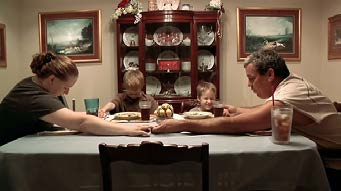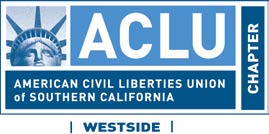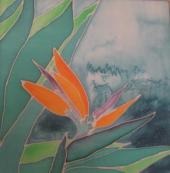Fluent in Faith
Please join us for a special reception after both services celebrating Catherine Farmer Loya's 10th anniversary with our congregation.
Coming Out Day
Screening "Two Americas"
 The ACLU Southern California Westside Chapter and the UUCCSM Peace and Social Justice Committee invite you to a free screening of the film "Two Americas" followed by a Q & A discussion with our special guest, film director JOHN HENION.
The ACLU Southern California Westside Chapter and the UUCCSM Peace and Social Justice Committee invite you to a free screening of the film "Two Americas" followed by a Q & A discussion with our special guest, film director JOHN HENION.
 TWO AMERICAS, from Emmy-winning Current TV’s investigative Vanguard series, profiles a month in the lives of two families in very different income brackets, showing the growing economic disparity in America.
TWO AMERICAS, from Emmy-winning Current TV’s investigative Vanguard series, profiles a month in the lives of two families in very different income brackets, showing the growing economic disparity in America. Admission is free. Voluntary donations will be collected for:
Admission is free. Voluntary donations will be collected for:Visioning Meetings
Join your Board of Directors in imagining the near and distant future of UUCCSM. This opportunity only happens once every 5-10 years. We are in our fourth year of Rev. Rebecca’s settled ministry. We are looking to honor, by making use of, the remarkable legacy gifts of Drew Still and Judy Federick. Our Long Range Planning Committee is urging us to work towards balance between spiritual depth, community and social justice in the life of our church. It’s time to think about what you really value: what you want more of, what you want less of, and what you love just the way it is. It’s all happening NOW in October, 2013.Sign up in Forbes Hall after both services, or email Nurit Gordon in the office with your choice of times.
 October 2013 - Four Meetings at Church
October 2013 - Four Meetings at ChurchVisioning Meetings
Join your Board of Directors in imagining the near and distant future of UUCCSM. This opportunity only happens once every 5-10 years. We are in our fourth year of Rev. Rebecca’s settled ministry. We are looking to honor, by making use of, the remarkable legacy gifts of Drew Still and Judy Federick. Our Long Range Planning Committee is urging us to work towards balance between spiritual depth, community and social justice in the life of our church. It’s time to think about what you really value: what you want more of, what you want less of, and what you love just the way it is. It’s all happening NOW in October, 2013.Sign up in Forbes Hall after both services, or email Nurit Gordon in the office with your choice of times.
 October 2013 - Four Meetings at Church
October 2013 - Four Meetings at ChurchSeptember, 2013
Bettye Barclay

"Loaves and Fishes"
"No Limits"
"The Journey Down the Mountain"
Rev. Rebecca Benefiel Bijur will be worshipping with our church at De Benneville Pines UU Camp in the San Bernardino mountains.
The Journey Down the Mountain
Christina Shu
Sept. 15, 2013
My family takes a lot of hikes outdoors. My father is a former ranger for California State Parks, and instilled in all of us a love of nature. When I was in high school, we took a vacation at one of my favorite places, Morro Bay, up the northern California coast. We decided on a lovely day hike, coming through some dry chaparral until we reached a quiet brook. On the way there, we walked in a line, my dad, my brother, then me and my mother and sister. When I hike, I look down at the trail a lot, because I’m paranoid about poison oak, and because I easily stumble on rocks. On moment I look down, and there’s a medium size rattle snake, sunning itself just on the edge of the trail. I screamed.
My father and brother circled back, we all stared at the rattlesnake, and, the snake, sensing some commotion, slithered off in the brush.
The next couple minutes I spent complaining to my dad about how he had missed a potentially venomous beast on the trail, when he was supposed to be the experienced guide and protector. We eventually arrived at our destination, ate a snack and headed back. I frequently find that the way back on a trail offers a new perspective on the terrain, and you can see the beauty surrounding you in a different way. As we passed through a sunny clearing, I heard a suspicious noise, looked down at the trail, and there again was a rattlesnake. I think it was the same one, but I’m not an expert. Again, I screamed, we all stopped and looked, and had to nudge it with a stick until it slowly slithered away, neither snake nor humans were injured in the process.
The lesson here is not just, look out for snakes when you go hiking, but about mindfulness on our journeys. I’m fond of our many metaphors for the spiritual journey of the soul—climbing up a mountain, wandering in the desert, joining a caravan of wanderers. There is so much beauty, joy and grace to be found on the spiritual journey, and yet again and again we will be confronted with snakes, with change, with pain, fear and loss. Pema Chödrön’s reading[1] reminds me to be careful of where our personal journeys intersect with the real-life suffering of ourselves and others.
Chödrön argues against the version of spiritual growth that is overly individualist, and self-centered, against the idea that enlightenment means withdrawal and disconnection from the world of suffering. Instead, she asks us to move down the mountain, towards suffering, slowly and gently, but move towards it because at the bottom of the mountain is where the true spiritual lessons lie. Here at the bottom of the mountain we develop our compassion, our interconnectedness with others, and love, love above all else.
I’ve been struggling with this idea of “moving towards suffering.” On the one hand, in my day job as a chaplain, I am called upon to enter into rooms of suffering, in very personal and intimate ways. I meet strangers who confess their fears of dying, or of the pain dying might bring. I meet families torn apart by illness, and hospital staff moving in and out of ethical and moral distress every day. And I do move towards it, I sit with suffering, I bear witness to suffering and allow myself to be personally moved and connected to it.
On the other hand, I have to confess, I’ve been avoiding news about Syria. The magnitude of death, torture and destruction seems to overwhelm my ability to comprehend. I’m afraid, if I look too closely, what will I feel—sad, angry, moved to action—and then what? What can I do about this immense, international suffering, human-created suffering? I wonder if some of you feel the same. Is there love and compassion to be found in Syria, and is it my responsibility, my spiritual step to move to find it? Earlier this week I tried to dive into the news, I read through online articles about Syria, some political, some background, one full of photographs, some opinions.
One was titled, “the first truly heartwarming video from Syria in a long time” by Max Fisher,[2] and was a 6 minute video of a father reunited with his son, a boy about three years old, who he thought was killed in a recent attack by the Assad regime (as many children have been killed). I watched the video with earphones sitting at my desk at work, a father a world away cried with joy holding his son, and his family around him shouted “Allahu akbar” or “God is great.” It was truly both miraculous to see this father’s relief and gratitude, and heartbreaking to imagine so many other families grieving and torn apart.
This video told a different story than the articles about impending military strikes and chemical weapons; it told a story about the suffering and the healing of one human family, and our whole human family. Suddenly Syria did not seem so distant, nor so overwhelming, and I was not paralyzed by fear or numbness anymore. I was filled with a deep sense of connectedness, and inspired to re-engage; I did not feel like avoiding the news anymore.
I believe the question is not, whether to move away from suffering, or to embrace it, because suffering is an unavoidable part of our reality. Whether personal and individual, familial or communal, structural or international, we must be able to come to terms with suffering, how we suffer and how we participate in it. We struggle to make our own meaning out of it. We do not rest on easy answers or clichés, not “everything happens for a reason” or “God doesn’t put anything on you that you can’t handle.” These explanations fall away in the face of the destruction, injustice and deep pain we feel in our personal lives, and which we experience as global citizens. We sometimes feel overwhelmed, defeated, lost.
Victor Frankl, psychiatrist, Holocaust survivor, and author of Man’s Search for Meaning, wrote, “We who lived in concentration camps can remember the men who walked through the huts comforting others, giving away their last piece of bread. They may have been few in number, but they offer sufficient proof that everything can be taken away from a man but one thing: the last of human freedoms—to choose one’s attitude in any given set of circumstances, to choose one’s own way.”[3]
Frankl’s philosophy centers on the human ability to choose how to respond to the circumstances of suffering, and how to maintain meaning and purpose. A similar story from our own religious tradition is of Universalist Clara Barton, known as the founder of the American Red Cross. During the American Civil War and before starting the Red Cross, she served as a nurse and assistant to soldiers, a ministry that continued even after the war. She set up an office to seek out and collect information about missing men, fielding inquiries and letters from family members, and sending out lists of names to newspapers. She sought to bring attention and effort to a project to mark and name the graves of almost 13,000 dead at Andersonville Prison.[4] In the midst of witnessing this national suffering, Barton sought to bring compassion, clarity, and justice to those who had been declared lost. Barton, and so many other heroes for justice and peace, choose to act uphold human dignity and to serve human needs in a time of crisis.
What are the choices that we are being asked to make today—how are we called to raise our own voices and take action? And at the heart of our spiritual journey is also the question, how do we sustain our spirits, and our sense of love, joy, beauty, and connection, in the middle of this suffering? How do we choose the way of compassion, which means to refuse to be numbed to suffering, to refuse to ignore it or minimize it, but come down from our mountains and dwell in relationship with the suffering of all beings?
First we must recognize our own connections to suffering—that is we are not the saviors coming down the mountain to rescue the poor masses—we must avoid stories in which we separate ourselves from others. Returning to Pema Chödrön, she writes in The Places That Scare You: A Guide to Fearlessness in Difficult Times, “Compassion is not a relationship between the healer and the wounded. It's a relationship between equals. Only when we know our own darkness well can we be present with the darkness of others. Compassion becomes real when we recognize our shared humanity.” Part of what scares us about suffering is our own complicity in it, whether personal, or societal. However, the promise of delving deeply into understanding suffering, is the recognition of shared humanity and deep compassion.
This past week our Jewish families, friends and neighbors observed their holiest of days, Rosh Hashanah, the beginning of the new year, and Yom Kippur, the day of atonement. It is taught that in the week between Rosh Hashanah and Yom Kippur, the book of life and death is open. These holy days offer a sacred possibility to contemplate mortality, ask for forgiveness, and renew commitments to living lives of meaning and purpose. One of the traditional and most somber prayers states, “On Rosh Hashanah will be inscribed and on Yom Kippur will be sealed how many will pass from the earth and how many will be created; who will live and who will die…who by water and who by fire….” A modern liberal translation by Rabbi Richard Levy states, “Who shall truly be alive, and who shall merely exist.” This prayer ends with the injunction that, “repentance, prayer and just action, have the power to change the character of our lives.”[5]
This Jewish tradition, as many religious traditions do, provides a reminder of our sins, which I define as the ways we have ruptured our sacred relationships to ourselves, others, and the world. It reminds us of our own limitations, our failures, and as Pema Chodron would say, our own darkness and capacity for evil, our tendency to not live up to treating ourselves and one another with respect and love. This holiday also gives direction on how to find healing and hope: seeking and practicing forgiveness from God, ourselves and others; prayer, meditation and contemplation; and just action. I believe it is with spiritual practices such as these that we find the answer to the question of how to sustain ourselves in the midst of suffering.
Our religious tradition of Unitarian Universalism brings us again and again to right action, to living our faith through our deeds to uphold peace, justice and freedom in our communities and our world. Our tradition also blesses us with the model of beloved community, the joy of being present together, knowing that when we celebrate one another’s worth and dignity in deep relationship, we find love and miracles abundant.
My hope for us today is that our own personal practices and our communities create the depth of spiritual life required to sustain us in suffering. If you were to make a new commitment for the year, what would it be? Perhaps instead of becoming numb or enraged in front of the television, we write a letter to a politician or come to a discussion at church. Or after a long week of work, we come home to light candles, sit in silent meditation, and spend an intentionally mindful dinner with our families. We could commit to take the risk to look into our own lives and habits to find our own hurting places, our own roots of suffering through reflection and spiritual discipline. We set aside time on Sundays for worship to gather strength and solidarity for our journeys.
I would like to close with these words by Jonas Salk,
“If we can be courageous, one more time than we are fearful;
if we can be trusting, one more time than we are anxious;
if we can be cooperative, one more time than we are competitive;
if we can be forgiving, one more time than we are vindictive;
if we can be loving, one more time than we are hateful…
we will have moved closer to the next breakthrough in our evolution.”[6]
I believe that our faith calls us to be loving one step at a time, that we are on a journey through mountains and valleys, amidst suffering and joy, a journey we are committed to making together. May we have a sweet new year, filled with working for a peaceful and just world. Amen and blessed be.
[1] Pema Chödrön from Prayers for a Thousand Years, ed by Elizabeth Roberts and Elias Amidon, Harper San Francisco, 1999, p.63.
[2] “The first truly heartwarming video from Syria in a long time,” by Max Fisher, Washington Post, Aug. 27, 2013, http://www.washingtonpost.com/blogs/worldviews/wp/2013/08/27/the-first-truly-heartwarming-video-from-syria-in-a-long-time/
[3] Frankl, Victor E., Man’s Search for Meaning, 1959.
[4] Parker, Kathleen, Sacred Service in Civic Space: Three Hundred Years of Community Ministry in Unitarian Universalism, Chicago: Meadville Lombard Press, 2007, p.106
[5] “U’netaneh Tokef,” On Wings of Awe: A Fully Transliterated Machzor for Rosh Hashanah and Yom Kippur Hardcover ed. by Rabbi Richard N. Levy, Ktav Pub Inc., 2011.
[6] Jonas Salk, in Prayers for Hope and Comfort: Reflections, Meditations and Inspirations, ed. by Maggie Oman Shannon, Conari Press, 2008, p. 134.
"Gather the Spirit: Ingathering Sunday"
Note: Today we return to two services at 9:00 and 11:00 a.m.
